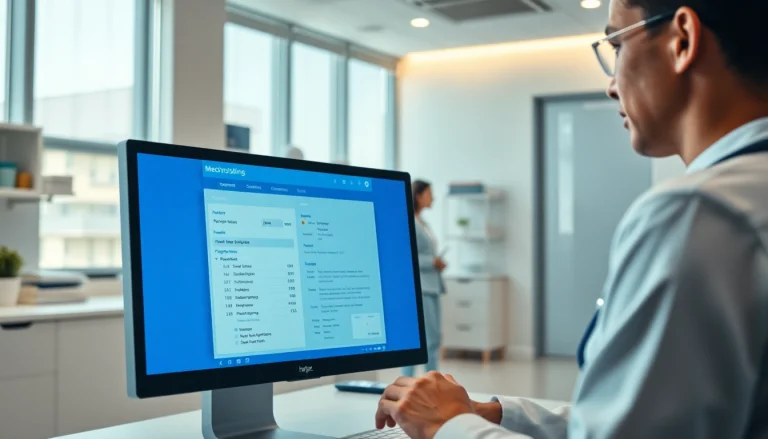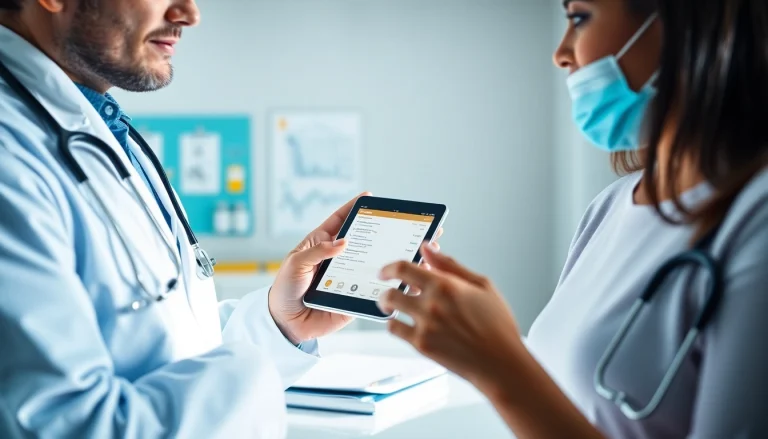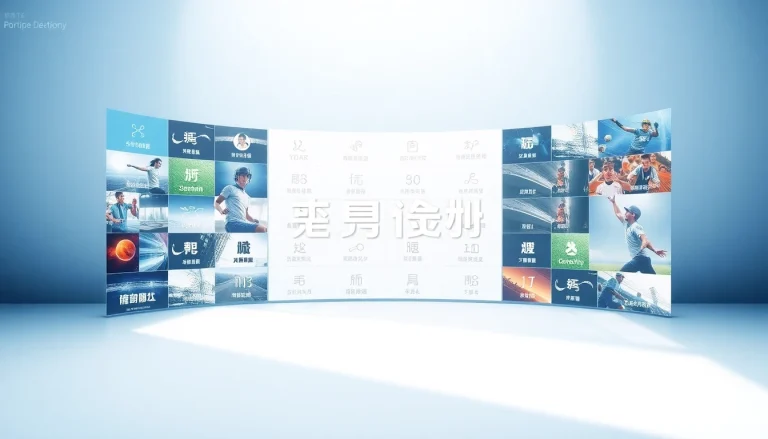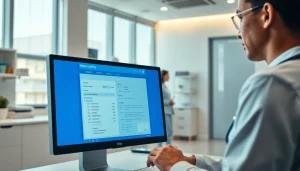Understanding Top Rated Prescription Applications
Definition and Purpose
In a world where technology continuously enhances healthcare services, top rated prescription applications have emerged as significant tools for both patients and healthcare providers. These applications serve various essential functions, such as managing prescriptions, offering medication reminders, providing telehealth services, and facilitating communication between patients and healthcare professionals. The purpose of these applications is not only to streamline the prescribing process but also to ensure a more patient-centered approach in healthcare delivery.
Key Features and Benefits
Top rated prescription applications are typically equipped with a range of features designed to improve user experience and operational efficiency. Some of the most notable features include:
- Medication Management: Users can track their medication schedules, dosages, and refills effortlessly, reducing the likelihood of missed doses.
- Telehealth Integration: Many applications allow patients to consult healthcare professionals remotely, increasing access to care.
- Centralized Health Records: They often support integration with electronic health records (EHRs), enhancing communication between different providers.
- Cost Comparison Tools: Users can compare prices for medications at different pharmacies, ensuring they receive the most affordable options.
The benefits of these applications extend beyond mere convenience. They can improve adherence to medications, reduce hospitalizations by managing chronic conditions more effectively, and promote informed decision-making for patients.
Importance in Modern Healthcare
As healthcare becomes increasingly complex, the role of technology in facilitating improved patient outcomes has never been more crucial. Top rated prescription applications enable better coordination of care, empower patients to take charge of their health, and ultimately contribute to a more sustainable healthcare ecosystem. These applications help bridge the gap between healthcare providers and patients, ensuring that medication management is transparent and efficient.
Comparison of Popular Top Rated Prescription Applications
Analysis of Functionality
When evaluating various top rated prescription applications, functionality stands out as a determining factor. Comprehensive analyses indicate that the most effective applications offer seamless functionality across several domains, including:
- Appointment Scheduling: Features that allow users to easily schedule visits can reduce wait times and improve access to care.
- Prescription Renewal Requests: Streamlining the renewal process ensures users maintain a continuous supply of their medications without unnecessary delays.
- Drug Interaction Alerts: Alerts for potential negative interactions between prescribed medications can safeguard patient health and enhance trust in the application.
User Experience Insights
User experience (UX) is critical in determining the success of any application. Feedback from diverse user demographics reveals several key insights regarding UX:
- User-Friendly Interface: An intuitive design is paramount for helping users navigate the application effortlessly, minimizing frustration.
- Personalization: The ability to customize notification settings or medication schedules promotes user engagement and adherence.
- Support Services: Accessible customer support and informative FAQs can significantly enhance user satisfaction.
Cost Considerations
The financial element plays a crucial role in the adoption of top rated prescription applications. Most applications fall into one of three categories:
- Free Applications: These are funded through ads or partnerships but may lack certain premium features.
- Freemium Models: Users can access basic features for free, but advanced functionalities require a subscription fee.
- Subscription-Based Applications: All features are available through a monthly or annual fee, which can often lead to better support and updates.
Ultimately, evaluating cost alongside functionality and user experience is essential for optimizing value.
How to Choose the Best Top Rated Prescription Applications
Assessing Personal Needs
Selecting the most appropriate application requires a systematic approach. The first step is to assess individual healthcare needs. Ask yourself the following questions:
- What specific medications are being managed?
- Do you require telehealth features?
- How comfortable are you with technology?
This self-assessment permits a more tailored selection process that aligns with personal lifestyle and health conditions.
Feature Prioritization
Once personal needs are identified, prioritizing features based on their importance is the next step. For instance, if telehealth consultation is crucial, an application that excels in virtual visits will be more beneficial than one without this capability. Listing desired features helps streamline options and aids in making an informed decision.
Seeking Professional Recommendations
Consulting healthcare providers can also enhance the selection process. Physicians, pharmacists, and other healthcare professionals may offer valuable recommendations based on experiences with various applications, enabling users to make choices backed by expert insight.
Maximizing Effectiveness of Top Rated Prescription Applications
Best Practices for Use
To maximize the effectiveness of these applications, consider adopting the following best practices:
- Consistent Use: Regularly accessing the application to check for medication updates or reminders enhances adherence.
- Engagement: Actively participating in features such as goal tracking or educational resources can lead to better health outcomes.
- Feedback Utilization: Providing feedback on your experience can help developers improve the application for future users.
Integrating with Healthcare Providers
Establishing a connection between the application and healthcare providers is essential in ensuring seamless communication regarding prescriptions and health updates. Most applications allow users to share data directly with their providers, fostering a collaborative approach to healthcare management.
Regular Updates and Maintenance
Keeping the application updated is crucial for optimizing its performance and security. Regular updates not only improve functionality but also enhance user experience by adding new features and fixing bugs. Ensuring that notifications are enabled can facilitate timely installations of updates.
The Future of Top Rated Prescription Applications
Emerging Technologies and Innovations
The landscape of prescription applications is continually evolving. Emerging technologies such as artificial intelligence (AI) and machine learning will likely play a pivotal role in future applications. These technologies can enhance personalization through algorithms that predict user needs based on behaviors and preferences.
Integration with Telehealth
As telehealth becomes an integral component of healthcare services, the integration of telehealth functions within prescription applications is projected to heighten. This integration will provide seamless transitions between prescription management and telehealth consultations, thereby improving patient access to care.
Anticipated Trends in User Adoption
Anticipated trends indicate that user adoption of top rated prescription applications will continue to grow as healthcare shifts toward digital solutions. Factors influencing increased adoption include:
- Expanding access to technology across various demographics.
- Rising focus on patient engagement and empowerment.
- Growing awareness of chronic disease management through app utilization.
As more users recognize the value of these applications in managing their health, widespread integration in daily life is expected.






